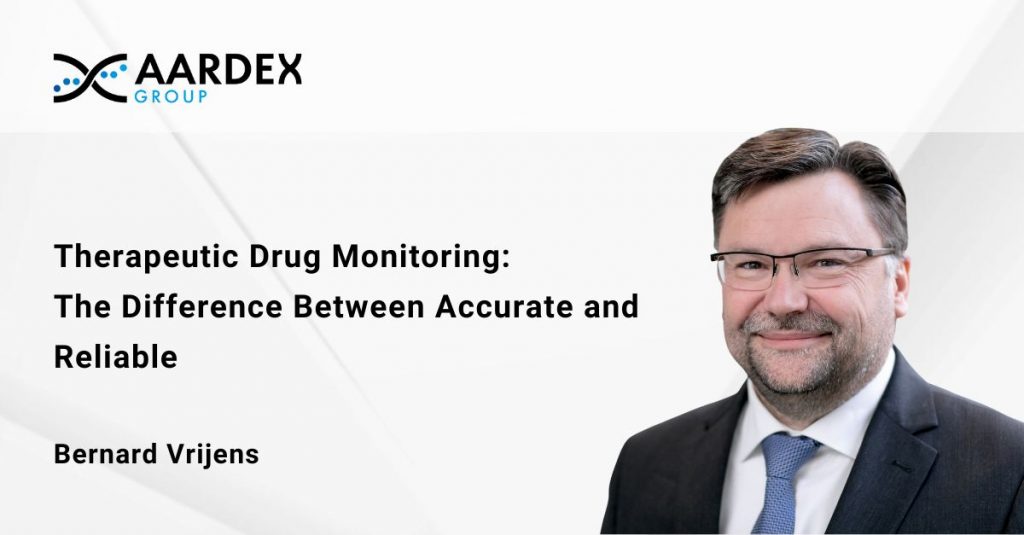Adherence to medication during clinical trials is a problem of striking magnitude, and one that researchers have employed therapeutic drug monitoring (TDM) to solve for years. But the approach, which measures the level drug or drug metabolites in patients’ blood, is heavily flawed when it comes to measuring medication adherence.
While it is fair to say that it is the most accurate measure of dosing in the moment, the sparsity of its use during a study renders it next to useless in assessing medicine-taking behaviour over any period of time.
Instead, researchers are increasingly looking to electronic methods of adherence monitoring to keep patients on track, trials on target, and pharmacokinetic (PK) models robust.
The problem with adherence
Poor adherence to the investigational product is common in clinical trials. Despite recruitment being a significant bottleneck in research timelines, between 3 and 4% of hard-won subjects never even start the dosing regimen, and, daily, 10 to 20% do not implement it effectively. In addition, up to 40% of people discontinue the medication before the study ends.1
Non adherence to the dosing regimens specified in study protocols introduces a level of variability that can severely impact on data integrity and put patient safety at risk. It can lead to underestimates of drug efficacy and drain study power, leaving sponsors to choose between expensive re-recruit processes or study failure.
In early-stage trials, it can also render painstakingly developed pharmacology equations useless. Much of the information needed to make pharmacokinetics (PK) and pharmacodynamic (PD) modelling is collected during phase II clinical trials, during which researchers carefully monitor participants to ascertain their reaction to the investigational product.
This process determines the dosing regimen at which the investigational product will, if successful, move into large scale trials, and then into market. But if people are missing doses, taking the drug erratically, or too often, for example, researchers will be working with compromised information.
Getting it wrong can lead to the failure of late-stage studies or unexpected AEs. It can also necessitate dose adjustment during phase III or even post-marketing, all of which raises safety concerns, delays, and increases costs.
It is for all these reasons that adherence has been qualified in the literature as “pharmacology’s embarrassing relative”. “By simply quantifying when and if a given patient takes his medicine, we remove an enormous amount of noise from both the PK and PD signals of the drug under investigation,” said the authors of one 2016 article. “Yet, despite the obvious connection between a patient taking a medicine as prescribed and its effect, adherence is not discussed much within the drug development community, much like that embarrassing relative on your spouse’s side of the family.”2
With the time and money it takes to develop a new drug increasing at lightning speed, it is time to bring that embarrassing uncle into the spotlight.
The problem with therapeutic drug monitoring
Despite the well-documented consequences of poor adherence during clinical trials, it has proved to be a stubborn problem to tackle. This is, at least in part, attributable to the limitations of traditional monitoring approaches.
Counting returned tablets, for example, was discredited as far back as 1989 when Pullar et al published a paper that concluded it “grossly overestimated” adherence.3 Self-report, which includes the use of e-diaries, is only accurate 27% of the time,4 and healthcare professional report is only right half the time,4 making it no more accurate than flipping a coin.
PK sampling, or TDM, may be a widely used approach, but that in no way means it is ideal. For starters, its invasive nature means it is anything but patient centric, particularly when we consider that between 4.5% and 10% of the population have a fear of needles.5 In addition, it is labour intensive for healthcare professionals tasked with taking the samples and laboratory teams tasked with processing them.
But crucially, when it comes to interpreting the results, TDM is heavily flawed. Because while it is highly accurate at any one time, it is used so sparsely during a clinical trial that the data it generates is unusable. In fact, studies have shown that the results of TDM are only a snapshot of medicine taking behaviour, representative of just the one to three days prior to a clinic appointment.6
The problem is “white coat adherence,” or the common phenomenon of people only taking their medicine in the immediate run up to a clinic appointment, which occurs in around 30% of visits.6
A 2008 study of 190 people living with HIV-1 infection, from Podsadecki et al, compared the results of TDM to those of continuous, digital monitoring. In 239 of the 768 visits (31%), drug intake was perfect one to three days before PK sampling, whereas compliance during the remainder of the inter-PK visit period was ≤95%. This was noted in 66% of subjects. The authors concluded the participants’ medicine taking behaviour in the period preceding the clinic visits was not representative of long-term drug exposure.6
The “snapshot” nature of TDM means it misses most dosing errors, as they tend to happen outside of the “white coat adherence” window of one to three days. A patient could have taken no investigational product at all for weeks, and re-started the medicine in the days leading up to the clinic visit, for example, but TDM would be none the wiser.
If researchers are working with such compromised data, its skews their calculations in areas such as PK modelling, as well as blood concentration-based dose adjustment. All this adds up to available variability in results and poor data quality, while also leaving the door open to patient safety concerns.
Embracing the digital future
Advanced digital monitoring methods, such as those advocated by us at AARDEX, are different because they can monitor dosing continuously.
They combine connected drug packaging, such as inhalers, blister packs, or capsule bottle caps, and powerful data analytics, and have been shown to be 97% accurate.4
Electronic sensors in the packaging record dose administration and transmit that information to the study team’s software. Then, a cloud-based platform analyses medication-taking behaviours, using proprietary algorithms, before flagging erratic dosing patterns to researchers in the form of data visualizations.
Various studies have demonstrated how connected packaging-derived, holistic data can reveal the full, true picture of medicine taking behavior – a picture that remains hidden from TDM’s “one point in time” approach.
Podsadecki et al, for example, found that four patients with levels of adherence varying between 32% and 77% as measured by electronic monitoring were all classed as fully adherent by TDM.6
Vrijens et al found EM dosing histories can be used as model input to estimate each patient’s internal drug exposure over time. This strategy delivered a better fit of the data than complex, typically artificial, models. This was especially the case in the presence of deviations from the protocol-specified drug regimen, prevalent when dosing is unsupervised. The report confirmed the usefulness of EM dosing histories for modelling pharmacokinetic data. 7
In a separate study, Vrijens and Goetghebeur describe electronic monitoring of a wide range of over- and under-dosing patterns as an “underestimated opportunity to observe and model realistic concentration-effect relationships”.8They found, particularly in non-linear PD estimation, bias can be reduced and higher precision can be retrieved from the same number of data points when irregular drug intake times occur in well-controlled studies.8
By providing a reliable, holistic dataset, EM can also be used to predict future adherence and validate TDM measurements. What’s more, it provides a robust base for PK and dose adjustment calculations.
Conclusion
In conclusion, TDM may be accurate, but, in clinical trials, it is simply the wrong metric. Because it is used so infrequently, it is representative of only the proceeding one to three days, meaning it provides but a snapshot of meds taking behaviour.
As an industry, we have been well aware of its limitations for decades, but a lack of workable alternative solutions meant it remained the best option.
But modern digital approaches are changing all that. They provide a full, holistic, and accurate dataset that researchers can use to guide action and inform decisions – all of which adds up to more robust clinical trials, and higher chances of success.
References:
- Blaschke, T. F., Osterberg, L., Vrijens, B., & Urquhart, J. (2012). Adherence to medications: insights arising from studies on the unreliable link between prescribed and actual drug dosing histories. Annual review of pharmacology and toxicology, 52, 275-301.
- Fossler, M. J. (2015). Patient adherence: clinical pharmacology’s embarrassing relative. Journal of Clinical Pharmacology, 55(4), 365-367.
- Pullar, T., Kumar, S., Tindall, H., & Feely, M. (1989). Time to stop counting the tablets?. Clinical Pharmacology & Therapeutics, 46(2), 163-168.
- El Alili, M., Vrijens, B., Demonceau, J., Evers, S. M., & Hiligsmann, M. (2016). A scoping review of studies comparing the medication event monitoring system (MEMS) with alternative methods for measuring medication adherence. British journal of clinical pharmacology, 82(1), 268-279.
- Anxiety UK. (n.d.). https://www.anxietyuk.org.uk/anxiety-type/injection-phobia/
- Podsadecki, T. J., Vrijens, B. C., Tousset, E. P., Rode, R. A., & Hanna, G. J. (2008). “White coat compliance” limits the reliability of therapeutic drug monitoring in HIV-1—infected patients. HIV clinical trials, 9(4), 238-246.
- Vrijens, B., Tousset, E., Rode, R., Bertz, R., Mayer, S., Urquhart, J., (2005) Successful Projection of the Time Course of Drug Concentration in Plasma During a 1-Year Period From Electronically Compiled Dosing Time Data Used as Input to Individually Parameterized Pharmacokinetic Models. J Clin Pharmacol, 45, 461-467
- Vrijens, B., Goetghebeur, E. (2004) Electronic monitoring of variation in drug intakes can reduce bias and improve precision in pharmacokinetic/pharmacodynamic population studies. Statistics in Medicine, 23, 531-544



